 by our College Data Analytics Team
by our College Data Analytics TeamWe've pulled together some essential information you should know about the program, including how many students graduate each year, the ethnic diversity of these students, average starting salaries, and more. In addition, we cover how USFCA ranks in comparison to other schools with conservation programs.
Go directly to any of the following sections:
The bachelor's program at USFCA was ranked #64 on College Factual's Best Schools for conservation list. It is also ranked #11 in California.
During the 2021-2022 academic year, University of San Francisco handed out 36 bachelor's degrees in natural resources conservation. Last year, the same number of degrees were handed out.
In 2022, 30 students received their master’s degree in conservation from USFCA. This makes it the #25 most popular school for conservation master’s degree candidates in the country.
Conservation majors who earn their bachelor's degree from USFCA go on to jobs where they make a median salary of $38,949 a year. This is great news for graduates of the program, since this figure is higher than the national average of $34,020 for all conservation bachelor's degree recipients.
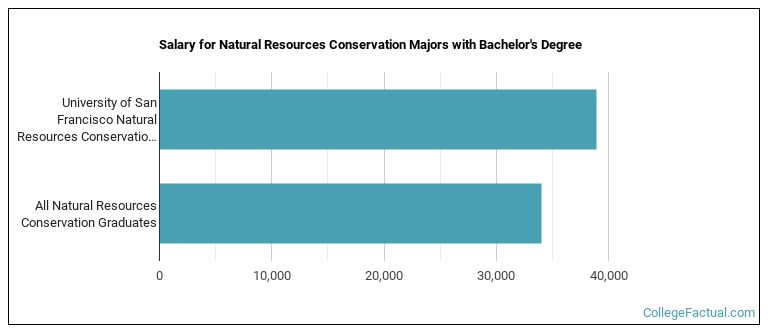
While getting their bachelor's degree at USFCA, conservation students borrow a median amount of $77,939 in student loans. This is higher than the the typical median of $28,049 for all conservation majors across the country.
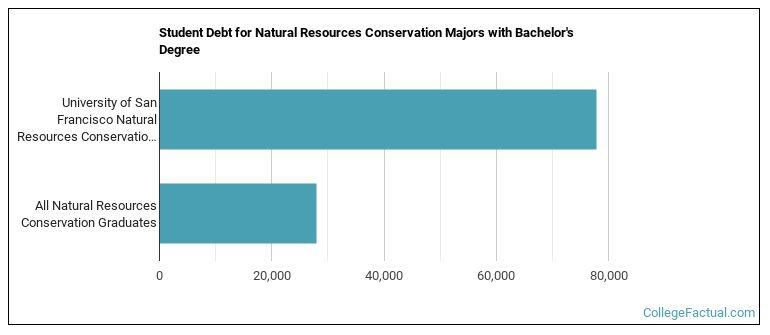
Part-time undergraduates at USFCA paid an average of $2,055 per credit hour in 2022-2023. This tuition was the same for both in-state and out-of-state students. The following table shows the average full-time tuition and fees for undergraduates.
| In State | Out of State | |
|---|---|---|
| Tuition | $57,670 | $57,670 |
| Fees | $552 | $552 |
| Books and Supplies | $1,152 | $1,152 |
| On Campus Room and Board | $17,300 | $17,300 |
| On Campus Other Expenses | $4,752 | $4,752 |
Learn more about USFCA tuition and fees.
For the most recent academic year available, 33% of conservation bachelor's degrees went to men and 67% went to women.
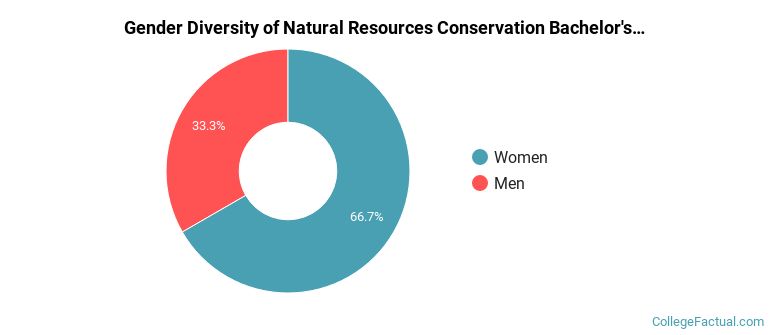
The majority of the students with this major are white. About 56% of 2022 graduates were in this category.
The following table and chart show the ethnic background for students who recently graduated from University of San Francisco with a bachelor's in conservation.
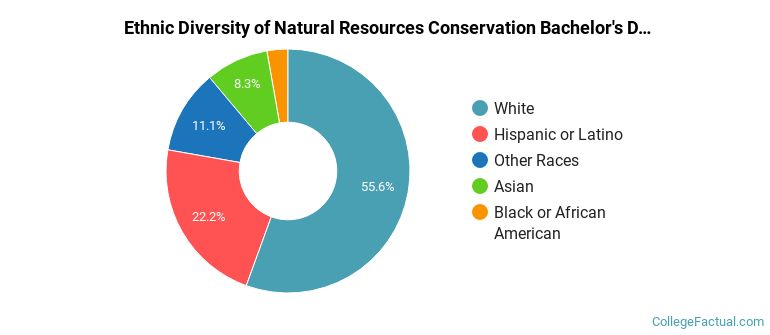
| Ethnic Background | Number of Students |
|---|---|
| Asian | 3 |
| Black or African American | 1 |
| Hispanic or Latino | 8 |
| White | 20 |
| Non-Resident Aliens | 0 |
| Other Races | 4 |
USFCA does not offer an online option for its conservation bachelor’s degree program at this time. To see if the school offers distance learning options in other areas, visit the USFCA Online Learning page.
Conservation majors graduating with a master's degree from USFCA make a median salary of $69,495 a year. This is a better than average outcome since the median salary for all conservation graduates with a master's is $55,058.
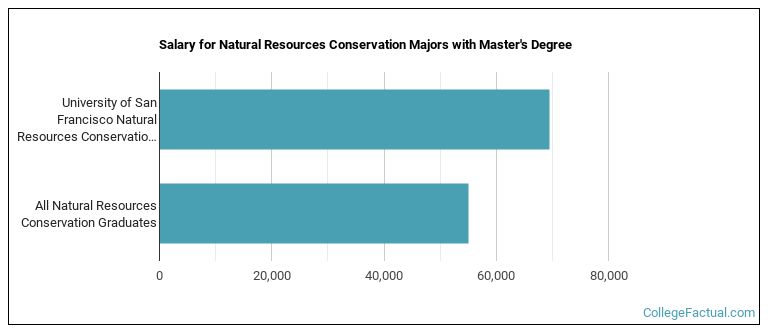
During the 2021-2022 academic year, 27 conservation majors earned their master's degree from USFCA. Of these graduates, 37% were men and 63% were women.
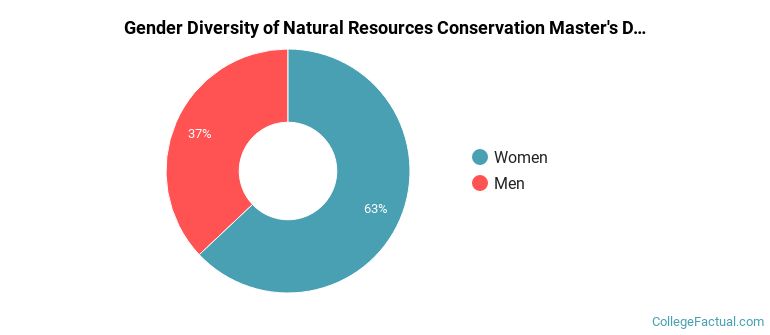
The following table and chart show the ethnic background for students who recently graduated from University of San Francisco with a master's in conservation.
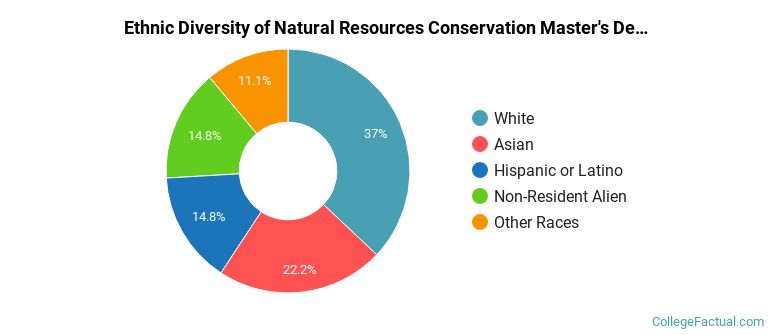
| Ethnic Background | Number of Students |
|---|---|
| Asian | 6 |
| Black or African American | 0 |
| Hispanic or Latino | 4 |
| White | 10 |
| Non-Resident Aliens | 4 |
| Other Races | 3 |
Take a look at the following statistics related to the make-up of the conservation majors at University of San Francisco.
More about our data sources and methodologies.